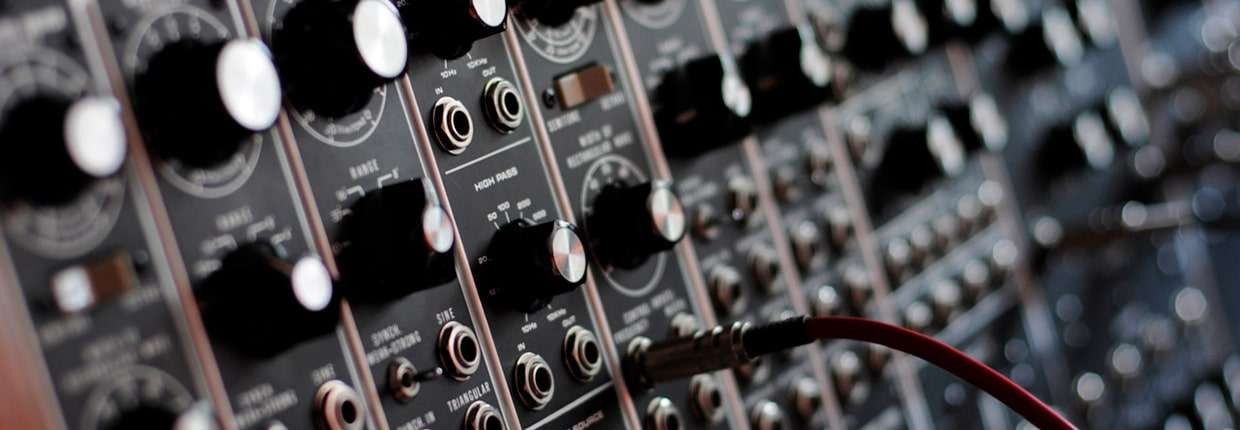Synthesis and Synthesizers
Published on 03/01/2022

The last time we talked about it we paid our attention in understanding what modular synthesizers are all about. In this post we shall start thinking about how to get closer to modular synthesis.

A modular system doesn't have, in theory at least, any limits. One can connect unlimited modules if space and budget would allow for it. Some one gets eventually close to those limits. Richard Devine is one guy worth to mention as an example. The Internet, indeed, is full of further examples like this one.
Operate such a complicated systems with confidence can be difficult for newcomers.
The good news is that with modular synthesis the musician can follow without major problems all the paths that creativity allows eventually mixing different technologies to get toward original results.
You can have analog, digitalor hybrid systems driven by keyboards or any other sort of controllers.
You can stick to standard connections getting, obviously, to... standard results.
You may try to experiment by yourself by mixing control and audio signals operating on parameters in a way that allows for the generation of audible sounds (please keep an eye in making sounds that can be appreciated or, at least, are consistent with the musical message of the song).
The simplest answer, with some amount of truth, is: every module. The classic modules described in our previous post are ok but it is possible to include in the selection devices meant to induce unusual behaviours in the audio chain.
Following this approach makes sense to select from following categories:
In this way the modular synthesis goes to different directions if compared with what you can do with pre-connected synthesizers.
Another interesting thing is to mix and match modules from different scools of thought such as West Coast and East Coast (we have been talking about the two approaches in this post).
Patience is the word you will need to deal with when starting. The learning curve is steep so starting from devices assembled with a thousend of HP and a huge amount of patch cables it is not the right way.
It is much better to start with something thought to facilitate the learning phase wich allows to get results soon. This will also help in reducing the slope of the learning curve.
Getting some class to ensure a solid theoretical background would surely help.
You don't need to get a degree in Engineering (even if it would help!) but you better try to find some simple but reliable source of information. As you might aware of, we have the answer to this question. Just go browsing our lessons about EZ electronic for musicians.
Semi modular devices are, probably, the best way to start as they are capable of making sounds even with no connector patched.
We have several examples and, without thinking to fullfill the list, we may advice to check the Moog Mother 32 to follow the East Coast approach. Make Noise 0-Coast for a trip on the other side of the North America. Arturia Minibrute if you want to check the European side of the sounds. Other similar selections are obviously well accepted.
In this way you can learn and keep those modules also when you get confidend and start building your wall of modules for the ultimate synthesizer.
This is also the right time to think about some sort of multichannel controller such as the Arturia Keystep Pro so you can have a single point to control the whole system.

Make first things first. Step slowly and get confidence before going head.
It is a fashinating world and, once you are there, you can get very far (even way too much, please take care!).
Once you have understood the principles of a given structure, and the synthesizer does exactly what you want, you can start thinking about more complex (and more costly) devices.
The limit is the sky (well, the ceiling, indeed) so there is a lot of room for everyone to find his/her very own way. Go playing!
Join us today and get 5% off your next order!

Empty cart